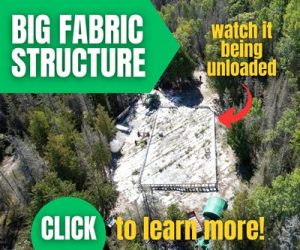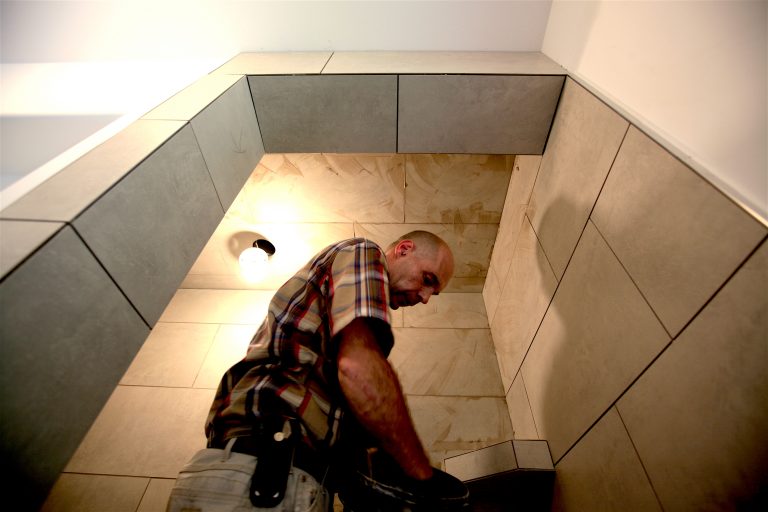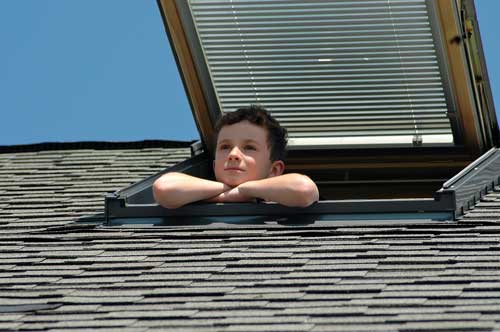
Thousands of people who own beautiful lakeside cottages will tell you that owning the place is fun, but a ton of work. If this is your experience, or if you want to avoid being overwhelmed by a cottage that you plan to build or renovate, you’ve come to the right place. It’s all too common to see people bite off way too much ongoing work when it comes to owning a seasonal home by the lake or in the countryside. This problem is made worse by the desire to create “natural” looking structures. The right kind of appearance is vitally important for keeping rural areas looking and feeling right, but it also means you might be pulling out your hair in a few years because of all the maintenance work you’ve created for yourself by going “natural”. This is where easy keeper building strategies can help, as you’ll see.
Easy Feature#1: Cedar Sidewall Shingles
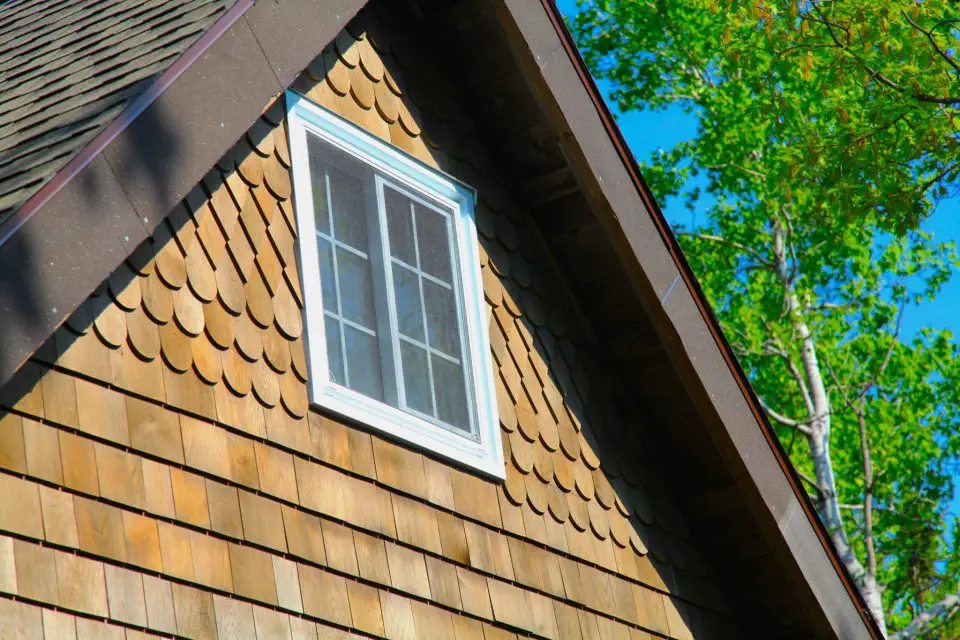
This under-used approach is one of my favourites because it combines natural good looks with amazing durability. I’ve seen properly installed cedar sidewall shingles last more than 50 years without any maintenance at all. You get the beauty of wood without the maintenance trap that most other forms of wood involve. Sidewall shingles also give you a lot of creative control. It’s easy to cut and installed patterns in the shingles that add a lot of beauty. Besides, working with real cedar shingles all day is a great thing. The work is clean, quiet and it smells good. You’ll get the longest lasting results if shingles are installed over some kind of vertical drainage detail. If moisture creeps in around windows or doors, or if condensation develops behind the shingles, it’s free to drain down and out of the wall.
Easy Feature#2: Non-Wood Decking

Too few cottage owners/home owners realize what’s required to keep a wood deck looking like more than barn board. So if you’re not a barn board sort of person, understand the hassles of keeping a cottage deck finished. Remind yourself that refinishing work probably isn’t the reason you own a cottage, then think about the case for non-wood decking. The biggest obstacle you’ll face is cost, but the numbers are deceiving. When you choose wood for a deck, you’re buying only the material. When you’re buying composite or synthetic materials, you’re buying material and sidestepping all future costs for finishing and refinishing. This is substantial. These days non-wood decking looks quite good too, especially the kind with wood grain details embossed in the surface, as you’ll see above.
Easy Cottage Feature#3: Non-Wood Fascia and Soffit

Even on “natural” structures like log cabins, wooden soffit and fascia is visually unnecessary and technically difficult to maintain properly. Aluminum fascia looks great on any building, no matter how natural the siding, and soffit is often something you can do away with altogether if you frame a roof with rafters. Just wrap the fascia around the bottom edge of the two-by fascia board, then leave it at that. I prefer to use stainless steel nails to fasten the bottom edge of the fascia (not the usual aluminum nails), driven into over-sized, predrilled holes in the metal. This lets the aluminum expand and contract without rippling as temperature changes. This is especially important if you’re installing brown fascia because it picks up more of the sun’s heat. This is also why I use polyurethane caulking to glue fascia joints together instead of anchoring face joints with nails driven into the wood. Tape the joints together while the caulking hardens and the aluminum remains free to expand and contract without buckling.
Easy Cottage Feature#4: Covered Porch
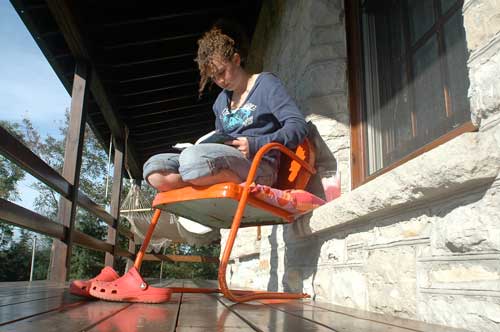
There are two reasons a covered porch is better than an ordinary open deck, especially at a country place. First, it lets you enjoy the outdoors more often. Covered porches provide a transition zone between indoor space and outdoor space – something that hardly happens in the city. Sitting under a porch roof during a rain is one of the great reasons to own a cottage. But on a practical level, a covered porch also does a lot to keep windows and doors in good shape by protecting them from the full brunt of the weather. A porch will keep driving rains away from a door, for instance, ensuring that leaks don’t happen. Keep the design simple by framing with rafters and lumber so the porch looks good from underneath. Prefinish the parts before installation or treat the underside with a wood weathering wash like Ecowood Treatment. Use construction-grade two-by material for the sheathing and you’ll have lots of wood thickness to hide roofing nails.
Easy Cottage Feature#5: Keep It Small
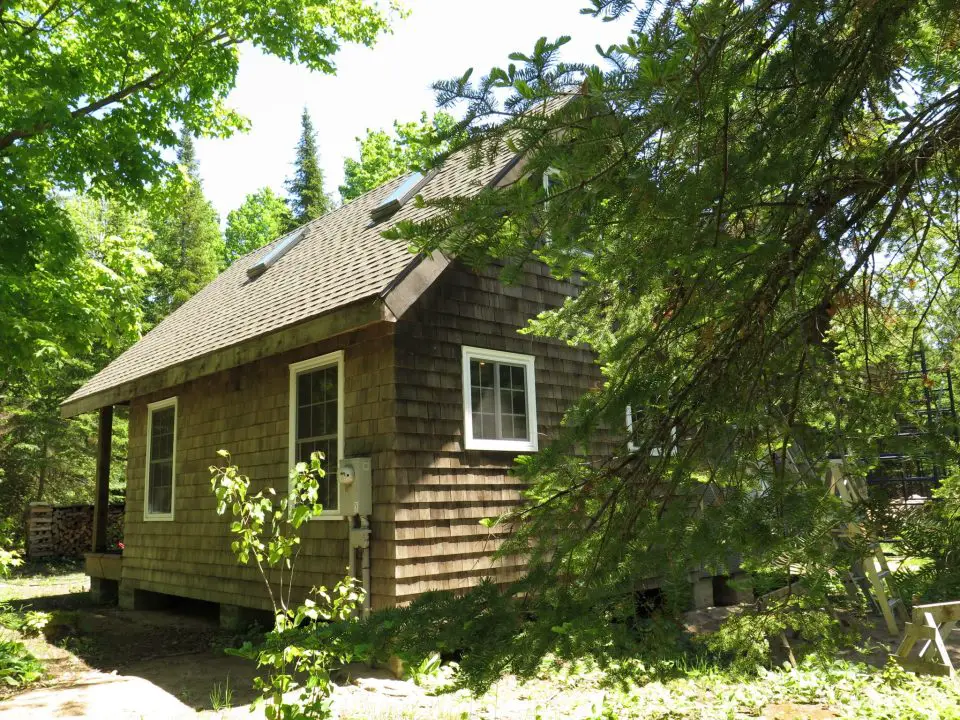
Building way too big is a common mistake property owners make when planning a lakeside retreat or rural getaway. This is especially likely if you come from a community of monster homes back in the city. It’s tempting to go along with the mistake to build way too big because it means more work for you over time. The thing is, real success always comes from doing the right thing, not necessarily doing what’s best in the short term. Remind yourself that the whole reason for a country place is to enjoy the country. And you really don’t need a monster cottage to make that happen. A massive building is not what lakeside living is all about. Remind yourself that it’s easier to buy something than it is to maintain it. Small really can be beautiful.
Lakeside developments and country retreats are looking more and more like suburbia these days and that’s a tragedy. The rural landscape and cottage life should be different than what exists in the city, and this difference begins with the buildings we put up. You don’t have the final say in these things, but the choices you recommend as a builder and the influence you exert on clients has a huge impact on whether or not cottage country stays beautiful without a crazy amount of maintenance.
Interested in building your own cottage, or handing off a great design with a builder? Checkout my online cabin-building course. Videos, plans and lots of descriptions Click below to learn more.





